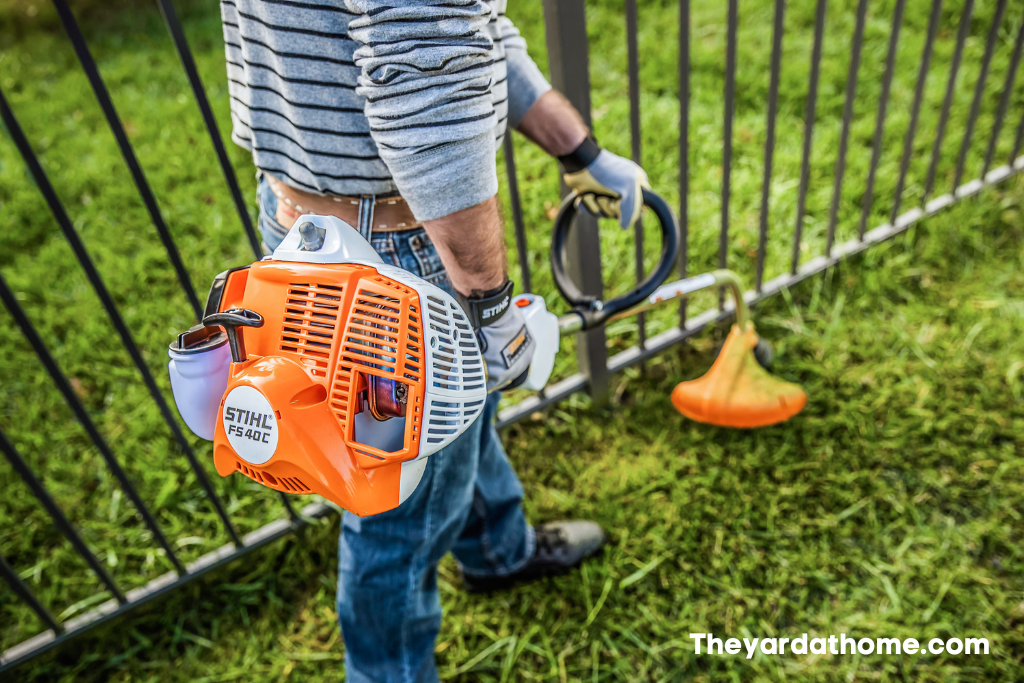A fuel tank vent is vital to your Stihl chainsaw’s fuel system. When it’s clogged or malfunctioning, it can lead to starting issues, power loss, and even damage to the engine.
In this article, we’ll cover some common Stihl fuel tank vent problems, troubleshooting tips, and effective fixes to keep your chainsaw running smoothly.
If you’re a Stihl chainsaw owner, you know how important keeping your tool in top condition is. One of the critical components of your chainsaw’s fuel system is the fuel tank vent.
This vent allows air to enter the fuel tank, providing fuel to flow to the carburettor. If the vent is clogged or malfunctioning, it can cause problems, including starting issues, power loss, and engine damage.
In this article, we’ll discuss some common Stihl fuel tank vent problems and how to troubleshoot and fix them.
Symptoms of Stihl Fuel Tank Vent Problems
Before we dive into the troubleshooting tips and fixes, let’s first look at some of the common symptoms of Stihl fuel tank vent problems.
If you notice any of these issues, it could be a sign that your chainsaw’s fuel tank vent is clogged or malfunctioning.
Hard starting:
If your Stihl chainsaw is challenging, it could be due to a clogged fuel tank vent. When the vent is clogged, it creates a vacuum in the fuel tank, making it harder for fuel to flow to the carburettor.
Power loss:
A clogged fuel tank vent can also lead to power loss. When the vent is blocked, it restricts fuel flow to the carburettor, reducing the chainsaw’s power output.
Engine damage:
In severe cases, a clogged fuel tank vent can cause engine damage. When there’s not enough fuel in the carburettor, the engine can run lean, leading to overheating and potential damage.
Now that you know the symptoms, let’s look at some troubleshooting tips and fixes for Stihl fuel tank vent problems.

Clean the Fuel Tank Vent
The first step in troubleshooting a clogged fuel tank vent is to clean it. The flue is typically located on top of the fuel tank, and it’s usually covered with a small cap or plug. To clean the vent, remove the lid or plug and inspect the vent for any debris or dirt.
If you see any buildup, use a small wire or compressed air to clear it. Once you’ve cleaned the vent, replace the cap or plug and test your chainsaw.
Replace the Fuel Tank Vent
If cleaning the fuel tank vent doesn’t solve the problem, you may need to replace it. Fuel tank vents are relatively inexpensive and easy to replace.
You can purchase a replacement vent from your local Stihl dealer or online. To replace the vent, remove the old one from the fuel tank and install the new one.
Make sure to secure the vent with any screws or clips that were on the old one.
Check the Fuel Lines
Sometimes, a clogged fuel tank vent can signal a more significant issue with your fuel system. Check the fuel lines for any blockages or damage.
A damaged or kinked fuel line can restrict fuel flow to the carburettor, causing starting and power issues.
If you notice any damage or blockages in the fuel lines, replace them immediately.
Replace the Fuel Filter
Another possible cause of Stihl fuel tank vent problems is a clogged fuel filter. A clogged fuel filter can restrict fuel flow to the carburettor, leading to starting and power issues.
If you suspect the fuel filter is clogged, replace it with a new one.
Inspect the Carburetor
If none of the above fixes solves the problem, you may need to inspect the carburettor. A malfunctioning carburettor can cause various fuel system issues, including starting and power problems.
Check the carburettor for any damage or blockages, and clean it thoroughly. If the carburettor is damaged, it may need to be replaced.
Preventing Stihl Fuel Tank Vent Problems
While Stihl fuel tank vent problems can be frustrating, there are steps you can take to prevent them from occurring in the first place.
Here are some tips to keep your chainsaw’s fuel system running smoothly:
- Use fresh fuel: Old or stale fuel can clog the fuel tank vent and carburettor. Always use fresh energy and mix it according to the manufacturer’s instructions.
- Clean the chainsaw regularly: Dirt and debris can accumulate on the chainsaw, including the fuel tank vent. Clean your chainsaw regularly to prevent buildup and potential clogs.
- Replace the fuel filter regularly: Fuel filters can become clogged over time, restricting fuel flow to the carburettor. Replace the fuel filter regularly to prevent clogs and maintain fuel system efficiency.
Conclusion
Stihl fuel tank vent problems can be frustrating, but they’re relatively easy to troubleshoot and fix. By following the tips and fixes outlined in this article, you can keep your chainsaw’s fuel system running smoothly and prevent potential engine damage.
Always use fresh fuel, clean your chainsaw regularly, and replace the fuel filter as needed to keep your Stihl chainsaw running at its best.

